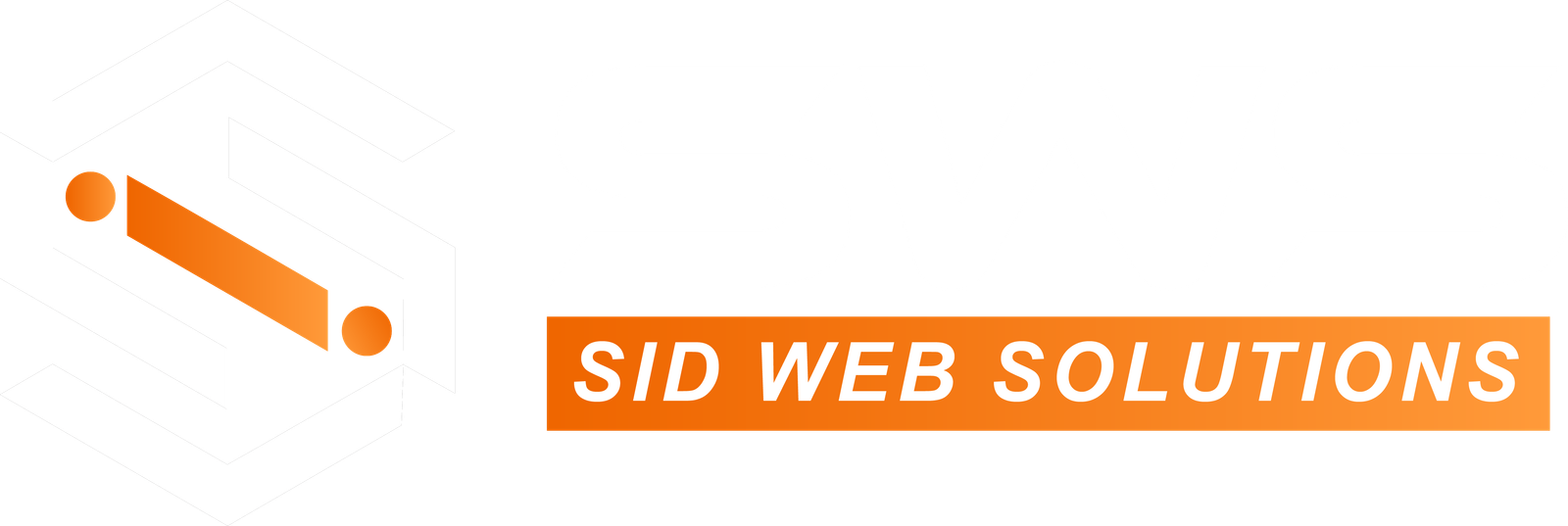How to enhance your website’s SEO, rank higher in search results and attract more visitors.
Every day, people make over 5 billion searches on Google. This makes search engine optimization (SEO) a crucial strategy for improving your website’s visibility and attracting quality traffic. By making the right adjustments, you can ensure your site reaches the right audience effectively.
“SEO works like free advertising for your business,” says Xain, an SEO Analyst at Sid Web Solutions. “By optimizing your site for relevant searches, you can reach the right audience effortlessly.”
Understanding what helps your website rank higher in search results—and what lowers its position—makes it easier to optimize your site for SEO. Check out the basics of SEO below then use the checklist to include it in your digital marketing plan.
Discover how to build your brand’s unique voice, design an eye-catching website & create engaging content with our help.
What is Website Optimization?
If you want to attract more visitors to your site, you need to focus on search engine optimization (SEO). This means adjusting your website so that search engines can easily understand and rank it.
The higher your site appears in search results, the more likely people are to click on it. Since most users choose one of the top links, your goal should be to reach those top spots. That’s where SEO tools can help improve your website’s visibility.
Improving your website’s SEO can also boost your conversion rate by attracting the right visitors. The right SEO tools help you understand what people search for when looking for products or services like yours. By optimizing your site based on these search terms, you can drive more traffic, convert more visitors into customers and grow your revenue.
Since many websites use similar SEO strategies, you need a unique approach to stand out. So, what steps can you take to get the best results from your website?
Benefits of Website Optimization
Optimizing your website for search engines takes effort but the advantages make it worthwhile. Here are some key benefits you can gain from a well-optimized site.
Improve your website’s SEO to attract more visitors, strengthen your brand’s presence and build trust with your audience.
Here are some key advantages of optimizing your website for search engines:
Driving More Traffic to Your Website
A major advantage of a well-planned SEO strategy is increased website traffic. Without proper optimization, it can be challenging to rank on the first page of search results for important keywords.
To improve your chances of ranking higher, focus on optimizing your site’s speed, especially for mobile users. A fast and mobile-friendly website attracts more visitors which can lead to more potential customers.
Increase Brand Awareness
A well-executed SEO strategy helps boost your brand’s visibility. Even if people don’t click on your website every time, seeing it frequently in search results builds recognition. Over time, they will start associating your brand with your industry.
When more people recognize your brand, attracting quality traffic becomes easier. This increases your chances of turning visitors into customers. Strong brand visibility is essential for business growth. To improve it, focus on creating SEO-friendly content that leaves a lasting impression on your audience.
Enhance User Experience
Bringing visitors to your website is just the first step. You also need to ensure they have a smooth and enjoyable experience. Optimizing your site helps users find what they need easily. A fast-loading website is crucial because no one likes waiting for slow pages to load. Making your site quicker and more user-friendly keeps visitors engaged.
Improving your website’s structure makes it easier for visitors to find what they need quickly. A well-organized layout enhances the browsing experience and keeps users engaged.
If you sell products online, simplifying the checkout process is essential. A smooth, hassle-free purchase experience encourages more sales. By making these improvements, you enhance user satisfaction and optimize your website for better performance.
Deliver More Relevant Content
Optimizing your website also means improving your content to ensure it meets users’ needs. Your content should provide valuable information that answers their questions. This is especially important for local SEO, where relevance helps attract the right audience in your area.
Regularly updating your content is essential for effective SEO. Fresh content ensures your website stays relevant to your audience’s needs. By making timely updates, you improve your chances of ranking higher in search results and keeping visitors engaged.
Creating relevant content helps search engines understand and categorize your website correctly. It also keeps your audience engaged, making it easier to attract and retain visitors.
Help Search Engines Understand Your Website
Search engines rely on data, not visuals, to categorize websites. If your site isn’t well-structured, it becomes harder for them to index it properly. By optimizing your website, you improve its structure, making it easier for search engines to understand and rank your content.
Optimizing your website helps search engine crawlers understand its content more easily. When your site is properly categorized, it reaches the right audience, increasing your chances of appearing in relevant search results.
Increase Your Conversion Rate
Website optimization not only attracts more visitors but also brings in the right audience. This improves your chances of turning visitors into customers, boosting your conversion rate.
Building a successful SEO strategy takes time and investment. To get the best return, focus on increasing your conversion rate. A well-optimized website helps turn more visitors into customers, making your SEO efforts more effective.
Improve Website Accessibility
Ensuring your website is accessible to everyone including people with disabilities, is essential. This means making your content easy to navigate and understand for all users. Regularly reviewing your site for accessibility compliance helps you stay inclusive and avoid potential penalties.
Discover how to build your brand’s unique voice, design an eye-catching website & create engaging content with our help.
4 Steps to Optimize Your Website
1. Learn How Search Engines Work
Search engines like Google use special formulas, known as algorithms, to decide which websites appear in search results. These algorithms change often but there are key factors they always consider.
Google, for example, looks at expertise, authority and trustworthiness (E-A-T) when ranking websites. Strengthening these aspects can help improve your site’s ranking.
2. Increase Your Online Presence
Your website’s ranking improves when it gets more visibility. Positive reviews, social media mentions and backlinks from other trusted websites can help boost your SEO. But, don’t take a shortcut and pay firms to purchase links for you—Google doesn’t approve of this practice.
3. Keep Your Business Profile Updated
Strengthen your expertise, authority and trustworthiness (E-A-T) by making sure Google has accurate details about your business. Use Google My Business to manage your profile, so people can easily find your business on Google Search and Maps using location-based searches.
4. Prove Your Website’s Relevance to Google
To rank higher, your website must show search engines that it’s trustworthy and relevant. Here are key factors to focus on:
- Search Relevance: Your website should clearly explain what you offer and where you operate so search engines can match it to the right searches.
- Mobile-Friendliness: Google prioritizes mobile-friendly pages over desktop versions. Ensure your website looks and works well on all devices.
- Fast Loading Speed: Pages should load within 1 to 3 seconds for a smooth user experience, as recommended by Google. A faster site improves both rankings and visitor satisfaction.
3 Basic Google Ranking Elements
-
-
-
-
-
-
- Search relevance
- Mobile-friendliness
- Page-load speeds
-
-
-
-
-
SEO Checklist – Improve Your Website’s Performance
The best part about SEO is that the same strategies that boost your rankings also enhance user experience (UX). Making your website more search-friendly not only helps it rank higher but also makes it more enjoyable for visitors.
“SEO should be a key focus at every stage of building your website and planning your marketing,” says SID, Partnerships Director at Sid Web Solutions. “It’s the top way for customers to discover small businesses.”
Go through this checklist to find ways to improve your SEO with simple changes and adjustments.
SEO checklist
-
-
- Feature relevant keywords
- Have a clean site structure
- Feature substantial content
- Use relevant title tags
- Add alt tags
- Optimize for mobile
- Enable fast load times
- Install Google Search Console and Analytics
- Make sure your website & URL are secure
-
Use Relevant Keywords
Keywords are the terms people search for online to find information. To improve SEO, include these keywords naturally throughout your website—such as in page titles, headings, content, image captions, descriptions and URLs—without making them sound forced.
People search with specific needs in mind, so your keywords should be long-tail—detailed and targeted. For example, “wedding photography Newport RI” is more effective than just “professional photography.” While broad keywords attract more visitors, specific ones help you reach the right audience, leading to better conversion rates.
Keep Your Website Well-Organized
Your website should be structured so that both visitors and search engines can easily navigate it. Internal links between pages should provide useful information, answer questions or keep visitors engaged. These links also help Google understand your site better, increasing the chances of attracting the right audience.
Provide Valuable & In-Depth Content
Your website content should be relevant to your main keywords and detailed enough to provide real value. While short, easy-to-read content is helpful, Google prioritizes pages that fully answer search queries. Pages with fewer than 200 words may not rank well. To make your content more effective, ensure each page solves a problem, answers a question or guides visitors toward their next step.
Use Clear & Relevant Title Tags
A title tag is the main heading that appears in search results for a webpage. It should be specific and descriptive. For example, instead of “Painting Class,” a better title would be “Learn How to Paint Landscapes and Portraits.” This makes it easier for search engines and users to understand what your page is about.
Along with a title tag, a meta description provides a short summary of your page in search results. A well-written meta description encourages users to click on your website.
Title tags also show up in browser tabs and when your content is shared on social media. You can easily add or edit them in your website settings by updating the SEO title for the title tag and the SEO description for the meta description.
Use Alt Tags for Images
Alt tags are text descriptions for images that serve three key purposes:
- Improve SEO – Since search engines can’t “see” images, alt tags help them understand and rank image content.
- Enhance Accessibility – They assist visually impaired users by describing images through screen readers.
- Provide Context – If an image doesn’t load, the alt text gives users an idea of what should be displayed.
Alt tags also make websites more accessible by helping screen readers describe images to visually impaired users. Keep them short and clear, like “boy smiling on a paddleboard in a lake” or “chocolate cake with vanilla frosting and strawberries.” This ensures both search engines and users understand your images.
Make Your Website Mobile-Friendly
Google favors mobile-friendly websites, so ensuring a smooth experience on all devices is essential. Your site should:
- Look good & function well on any screen size.
- Load quickly, even on slower networks like 3G.
- Have easy-to-tap buttons and well-spaced elements for better navigation.
- Display content properly without needing to scroll sideways.
Many website builders let you preview how your site appears on mobile to make sure it’s user-friendly.
Improve Your Website’s Loading Speed
Your web pages should load in under 2 seconds—definitely no more than 3 seconds—to boost your search rankings. Slow load times can be caused by:
- Issues with your content management system (CMS)
- Poorly optimized code
- Low server bandwidth that can’t handle high traffic
- Large image files slowing down the page
Use Google PageSpeed Insights to check your site’s speed, and choose a reliable hosting platform that supports fast loading times.
Secure Your Website & URL
Google prioritizes HTTPS encryption for website security. If your site isn’t HTTPS-secured, users may see a warning in search results.
To protect your website and visitors’ data, choose a platform that includes SSL certificates. This ensures your site is encrypted and verified as authentic, building trust with users and search engines.
Website Optimization Tools
To improve your website’s performance, using the right optimization tools is essential. There are many options available, so choose the ones that best fit your needs. Here are some top tools to consider:
1. Google Search Console
Google Search Console (GSC) is a free tool that helps you track and improve your website’s SEO performance. Once you connect your site, it takes a few days to start displaying data like clicks, impressions and rankings.
With GSC, you can see which search terms bring visitors to each page and where your site appears in search results. This data helps you make informed SEO improvements and track progress over time.
2. Google Analytics
Google Analytics is a powerful tool for tracking your website’s performance. Since most search traffic comes from Google, understanding how it views your site is essential.
With Google Analytics, you can:
- Analyze which keywords and phrases bring visitors to your site.
- Monitor your SEO performance to see what’s working & what needs improvement.
- Track user behavior to optimize your content & marketing strategies.
Using this data helps you refine your SEO efforts & improve your website’s ranking.
3. Hotjar
To enhance your website’s performance, understanding user experience is a key—this is where Hotjar comes in.
Hotjar tracks visitor behavior and provides insights through heatmaps which show where users spend the most time on your site. This helps you identify what’s working well and what needs improvement, allowing you to make data-driven changes for better engagement.
4. Semrush
Semrush is a widely used tool for website optimization and digital marketing. It offers features for SEO, content marketing and social media management, helping you drive more traffic to your site.
Both free and premium versions are available, so you can choose the one that best fits your needs.
5. Moz Pro
Moz Pro is a powerful tool that offers a range of SEO and digital marketing features. It provides both free and premium options, allowing you to:
- Gather detailed SEO data for better insights.
- Use analytics tools to measure your website’s performance.
- Access advanced APIs to fine-tune your site and improve search rankings.
For deeper optimization and long-term SEO success, investing in the premium version can be beneficial.
Get Discovered Online
When users search for something and find your website in the results, they are more likely to engage with your content. A well-optimized website that follows SEO best practices attracts the right audience and encourages them to stay, explore and interact with your business.
“A well-structured website with valuable content and naturally placed keywords will earn Google’s trust,” says HAR. “This leads to better results.”
Discover how to build your brand’s unique voice, design an eye-catching website & create engaging content with our help.


